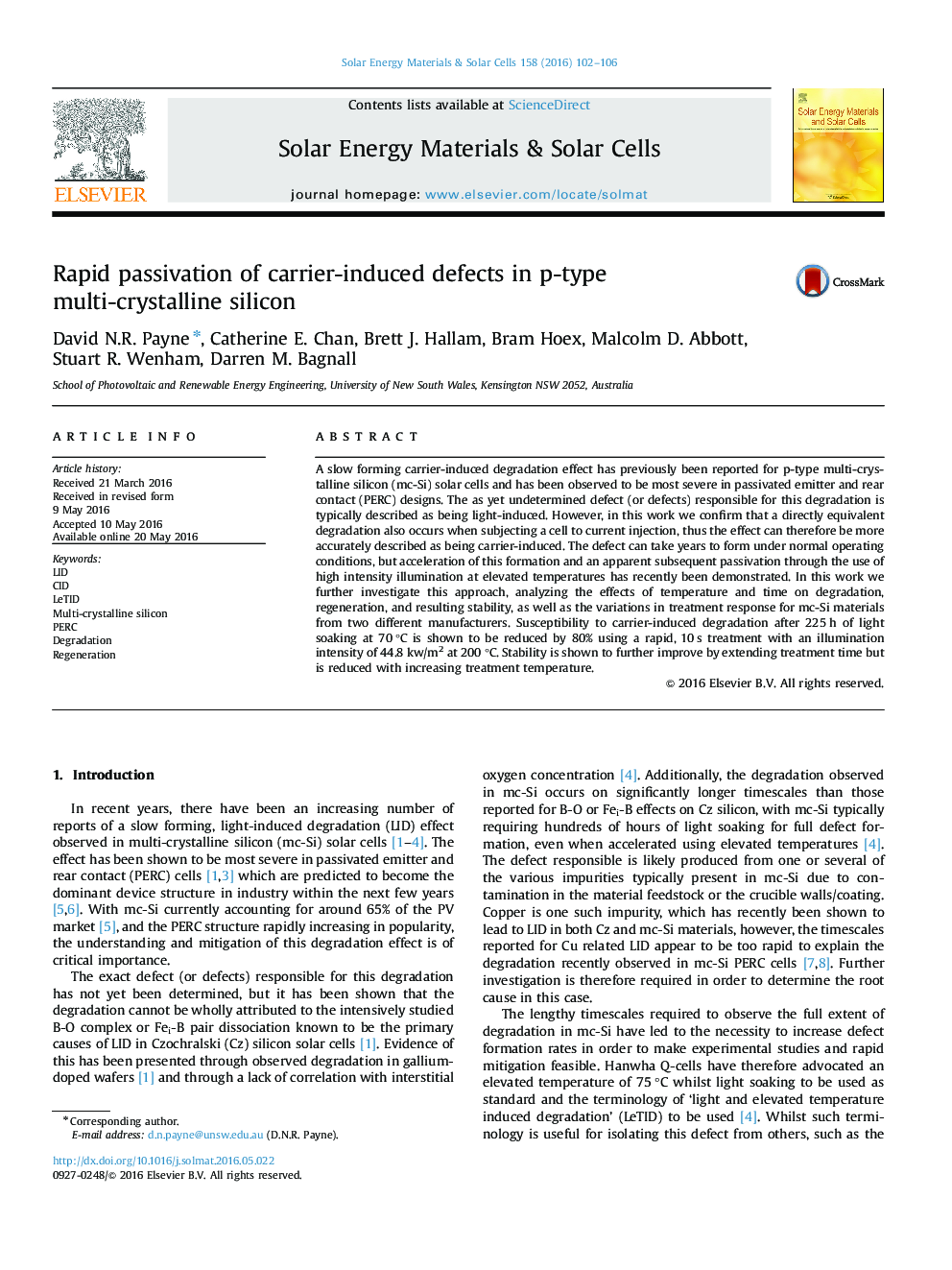| Article ID | Journal | Published Year | Pages | File Type |
|---|---|---|---|---|
| 6457435 | Solar Energy Materials and Solar Cells | 2016 | 5 Pages |
â¢Slow forming LID present in mc-Si cells is confirmed to also be activated by current.â¢Effect found to varying extents in mc-Si PERC cells from different manufacturers.â¢Treatments using high irradiance and elevated temperature processes are investigated.â¢Degradation reduced by up to 80 percent using a rapid 10 s treatment.â¢Extending treatment time further suppressed degradation.
A slow forming carrier-induced degradation effect has previously been reported for p-type multi-crystalline silicon (mc-Si) solar cells and has been observed to be most severe in passivated emitter and rear contact (PERC) designs. The as yet undetermined defect (or defects) responsible for this degradation is typically described as being light-induced. However, in this work we confirm that a directly equivalent degradation also occurs when subjecting a cell to current injection, thus the effect can therefore be more accurately described as being carrier-induced. The defect can take years to form under normal operating conditions, but acceleration of this formation and an apparent subsequent passivation through the use of high intensity illumination at elevated temperatures has recently been demonstrated. In this work we further investigate this approach, analyzing the effects of temperature and time on degradation, regeneration, and resulting stability, as well as the variations in treatment response for mc-Si materials from two different manufacturers. Susceptibility to carrier-induced degradation after 225 h of light soaking at 70 °C is shown to be reduced by 80% using a rapid, 10 s treatment with an illumination intensity of 44.8 kw/m2 at 200 °C. Stability is shown to further improve by extending treatment time but is reduced with increasing treatment temperature.
